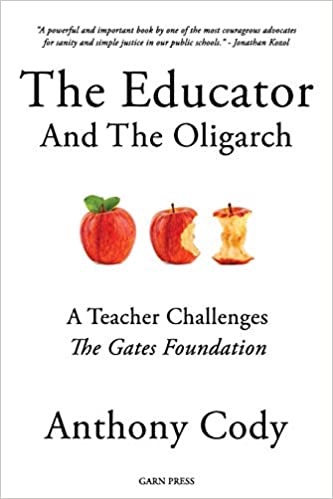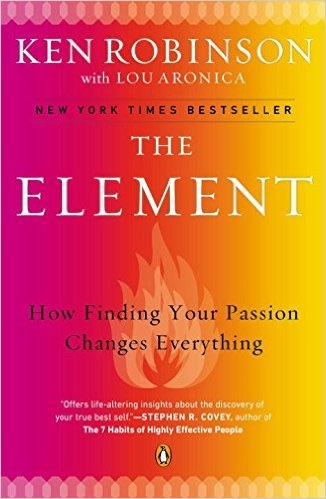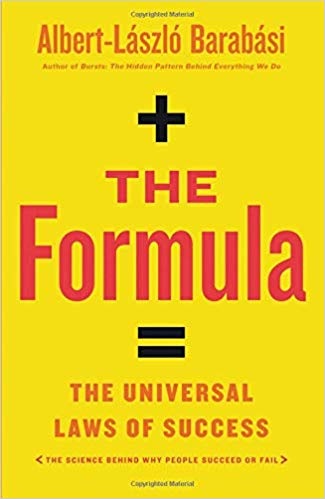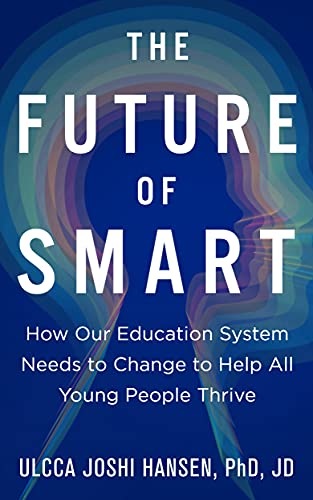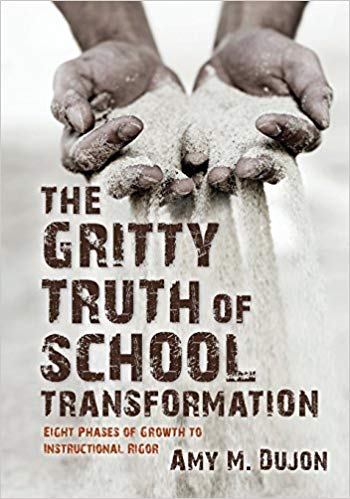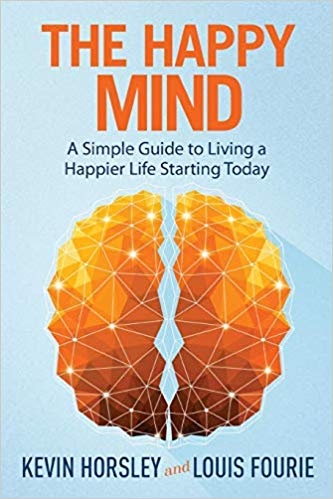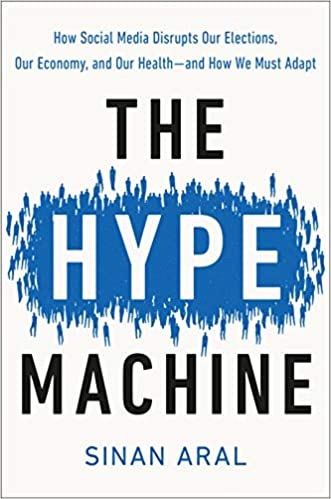Archive for the ‘Book Summaries’ Category
Saturday, October 31st, 2020
The Educator And The Oligarch: A Teacher Challenges The Gates Foundation by Anthony Cody shows how the Gates Foundations’ efforts to reform education have had a mostly negative impact. By spending a small fraction of the total education budget, people like Gates can buy politicians, muzzle the media, and control many special interest groups and non-profit organizations with grant money aimed at advancing their agenda. Please purchase this book and spread the word. (Note: Like every other book summarized here, this one was written prior to the COVID-19 pandemic.)
Preface and Introduction
- The thrust of this book is that something is seriously wrong with our system when one of the richest men in the world can spend a few billion dollars and seize the reins of education policy. By funding almost everyone who does advocacy, including teacher unions, Gates can call the tune. The tune is Common Core and associated tests that are designed to yield wide-spread failure. Like tobacco companies in the 1960s, their sponsored research tells them what they want to hear. This undermines the public’s democratic control of education and devalues the teaching profession. There is nothing generous in using the power of wealth this way.
- Unlike previous grant efforts by wealthy foundations, the Gates Foundation’s approach was different. Their starting point was “we know what is broken and we know how to fix it.” They invite proposals by directly contacting organizations. They then collaborate with the organizations to develop proposals that align with their agenda. With their vast wealth, an entire sector of organizations became dependent on their funds.
Part I: The Assault on Public Education by Bill Gates
1. Bill Gates’ Big Play: How Much Can Money Buy in Education?
- Gate’s vision starts will the total reliance on standardized tests that were already required by federal law (NCLB). These tests were flawed and NCLB was bound to fail so it was necessary to develop a new generation of tests based on new standards known as the Common Core. It also helped to get staff from the Gate’s Foundation transferred to the Federal Department of Education. Gates held that the field of education didn’t know much about teaching. He started by funding research that defined effectiveness as high test scores. This means that teachers get paid for these results. Next, he donated to advocacy groups to the extent that he became their largest donor. The final step was to donate to the media’s efforts to cover education.
2. Circular Reasoning at the Gates: Education Nation Off to a Confusing Start
- Here are excerpts from a Teacher Town Hall from 2011 on NBC moderated by Brian Williams. He tells the audience that they will be using facts provided by the Gates Foundation as they are the largest single funder of education in the world. (Doug: I think the US government is the largest single funder.) On this show, Melinda Gates claims that there are multiple measures that they are using along with test scores such as administrator and peer observations along with student questionnaires. But, the only models of these other measures that she wants to use are those that improve test scores. Here the author suggests that many of the strategies used to boost scores are harmful to our students.
3. Teachers Face Good Cops or Bad Cops in Push for Evaluations
- The bad cop is the New York Post, which published the names of teachers with the worst scores. The good cops are Bill Gates and Michelle Ree who said this is wrong and that multiple measures should be used in addition to tests. Their other measures, as we have seen, are correlated to test scores. These good cops also push value-added ratings (VAR), which research has shown to be highly unstable for individual teachers. Translation: VARs are garbage and should never be used as part of a teacher rating system. There is also the false assumption that there are a significant number of crummy teachers who need to be weeded out. (Doug: From what I’ve seen as an educator since 1969, crummy teachers weed themselves out as being a bad teacher really sucks.) As it stands, 50% of teachers leave the profession within five years and turnover rates in high-poverty schools are 20% each year.
4. Cui Bono? The Question Rarely Asked, Let Alone Investigated
- Cui bono means who benefits. Journalists should be asking this question, but they don’t seem to be doing so. They are, however, repeating false ideas that the reformers put forward such as our public schools are failing due to the ineffective teachers that need to be fired. They also tout the success of charter schools, which overall is not the case. The winners here are the testing companies, curriculum designers and publishers, consultants, technology and software companies, and various leadership organizations.
5. Bill Gates Discovers Money Cannot Buy Teachers
- The main idea here is that people, in general, can sense when they are being manipulated and coerced. When this happens they resent it and resist. Here we are talking specifically about teachers. They aren’t opposed to being evaluated based on student work such as portfolios, but they resist being evaluated by invalid standardized tests that are closely correlated with the socioeconomic background of their students. Teachers, therefore, are justified in being ungrateful for all the money Gates has poured into education to remake it in his own image.
6. Bill Gates Goes to College. Has He Learned From His k12 Project?
- Gates is also determined to change higher education with a focus on tests that measure specific skills that employers want. His focus is also on online courses, which have been shown to be less effective for all save the brightest. (Doug: We are seeing that now as well with remote learning) The approach sends the message that education is only for job preparation, which the author rejects. Blended learning, which offers a mix of online and in-person instruction appears to be effective, but 100% online doe not appear to be.
7. Is ASCD Embracing Market-Driven Education Reform?
- Organizations like ASCD are being directly paid to support the implementation of Common Core, which converts them into advocates for the controversial standards. Along with it comes “market-driven” systems, which feature a push for charter schools, private schools, and vouchers at the expense of public schools. In 2011, the Gates Foundation awarded ASCD a grant of $3 million to help implement the Common Core. If you just read ASCD’s journal you wouldn’t know that the Common Core is controversial.
8. Is Gate’s Money Going to Influence the National Board?
- While Gates claims that teachers participated in the creation of the Common Core Standards they were not involved. He also tries to convince us that since the schools can create the curriculum, teachers can still teach as they wish. He negates this when he says that he will know that his efforts have succeeded when the curriculum and the tests align with the standards. He pushes for control of schools by mayors as when just one person is in charge, change can be made more efficiently. It also means that he only has one person he needs to influence or buy off. Note that cities, where mayors are in charge, have fared worse. Other organizations know that if they want his money they have to sing this tune.
9. Gates and Duncan Seek to Use Trust in Teachers to Promote Common Core.
- If Gates and the Department of Education under Duncan (appointed by Obama) trusted teachers, they would not have had Common Core standards drafted by test makers instead of educators. They would not have created the pseudoscience of VAM to try to hunt down bad teachers. If leadership organizations were true leaders, they would not have allowed themselves to be co-opted and bought off. Gates seems to operate by bad analogies. One mentioned here is “standardization is important to allow for innovation… like the standardized outlets we have in our houses.” He sees innovation as the domain of the creators of mass-produced tools and the teachers as consumers. He accuses teachers of not knowing much about effective teaching, which is why he came up with the Common Core and its testing to define excellence.
Posted in Book Summaries, Business Books, Education Books, Leadership Books | Comments Off on The Educator And The Oligarch: A Teacher Challenges The Gates Foundation by Anthony Cody
Tuesday, September 6th, 2016
The Element: How Finding Your Passion Changes Everything by Ken Robinson, PhD (©2009, Penguin Books: New York, NY) deals with the point where natural talent meets personal passion. Ken explores the conditions that lead us to live lives filled with passion, confidence, and personal achievement. The stories about people from a wide variety of fields entertain and inspire. The book is a classic. If it’s not on your shelf, click the icon below to get your copy. If you read it a while ago, my summary will be a good review. Also check out Sir Ken’s TED Talks.
Sir Ken Robinson
- Sir Ken is an English author, speaker, and international advisor on education in the arts to governments, non-profits, education, and arts bodies. He was Director of The Arts in Schools Project (1985–89), Professor of Arts Education at the University of Warwick (1989–2001), and was knighted in 2003 for services to education. Originally from a working-class Liverpool family, Robinson now lives in Los Angeles with his wife Marie-Therese and children James and Kate.
Introduction
- We are all born with tremendous natural capacities, and we lose touch with many of them as we spend more time in the world. Ironically, one of the main reasons is education itself. Young children are confident in their own imagination and usually see themselves as being creative when they start school. By the time they finish formal education, most don’t feel that way. Ken uses the stories of people who did find their Element and offers them to help us all do the same. Most of the stories were gathered via direct interviews that often feature twists, turns, and surprises.
Who’s Stories?
- Here are some of the people who’s unlikely stories help make this book so special: Matt Groening – Simpsons creator, Gillian Lynne – dancer and founder of company that did Cats and Phantom of the Opera, Paul Samuelson – economist and author, Paul McCartney – Beatle, John Cleese – Monty Python member, Mick Fleetwood – drummer Fleetwood Mac, Bart Conner – Gold Medal Gymnast, Gordon Parks – Founder of Essence Magazine, Buckminster Fuller – architect, Ewa Laurance – woman’s world billiards champion, Aaron Sorken – award winning writer for stage, movies, and television, Meg Ryan – Actress, Arianna Huffington – creator of The Huffington Post, and Richard Branson – Entrepreneur.
Tags: Ken Robinson, The Element
Posted in Book Summaries, Education Books, Leadership Books, What can Dr. Doug do for you? | Comments Off on The Element: How Finding Your Passion Changes Everything by Ken Robinson
Sunday, January 27th, 2019
The Formula: The Universal Laws of Success by Albert-László Barabási explains how his team discovered these laws and how they can apply to your life and the lives of those you touch. While successful people throughout the ages had no idea of why they succeeded, you don’t have to. This is certainly one of the most important books I have summarized to date. Be sure to get a copy for your school.
Introduction
- Albert and his team gathered data on people who achieved success in as many fields as possible. The assumption is that success leaves a trail of data points behind it such as publications, museum exhibits, sales, and even sports statistics. The idea was to find a series of recurring patterns that drive success in most areas of human performance. This is not about success as judged by the individual as that leaves no trail. As a result of this effort, we have the universal laws of success..
1. The Red Baron and the Forgotten Ace
- This starts with the story of Manfred von Richthofen, Germany’s ‘Red Barron’ who shot down eighty allied planes during World War I. His success was magnified by the German government and he did what he could to blow his own horn. His fame lives on thanks to Charles Schultz and Snoopy. Contrast him to René Fonck, a French pilot who may have shot down as many as 127 German planes. Fonck is an example of outstanding performance without success. He is like the opposite of Kim Kardashian. This reminds us that success and fame are very different. Albert tells stories of other people who did something first only to see a latecomer get the credit. Success, therefore, is about how you and your performance is perceived by others.
2. Grand Slams and College Diplomas
- The First Law: Performance drives success, but when performance can’t be measured, networks drive success. It’s time to see the largely invisible networks that shape our success.
- First we see that some areas like academic performance with metrics like SAT scores and GPAs and tennis with its precise ranking system are much different from most fields where accurate performance metrics don’t exist. The interesting finding here is that ambition along with performance seems to be important. Students who are rejected by top colleges like Harvard do just as well as students who go there due to their ambition. This suggests that the schools don’t really matter. It’s the student who matters.
3. The $2 Million Urinal
- Now we look at a field where there is no easy metric to judge performance, the field of fine art. Here what matters most is your network. This network is composed of curators, art historians, gallery owners, dealers, agents, auction houses, and collectors. At the center of the story is a toilet simply signed by Marcel Duchamp that sold for $2 Million dollars. Albert also points out that the Mona Lisa didn’t become the world’s most famous painting until it was stolen and wasn’t found for two years. This shows the importance of context. There is a trove of data here that contains information about where artists have shown their works. Again we see that the ambition to have your works shown in top galleries along with persistence and expanding your network are key attributes. Like students ambitious enough to apply to Ivy League schools, artists ambitious enough to promote their works to top galleries are the ones more likely to succeed.
Posted in Book Summaries, Business Books, Education Books, Leadership Books | Comments Off on The Formula: The Universal Laws of Success by Albert-László Barabási
Monday, October 11th, 2021
The Future of Smart: How Our Education System Needs to Change to Help All Young People Thrive by Ulcca Joshi Hansen is the book for you if you want to make education more authentic, exciting, and valuable for every student in your school. It gives some history of how the factory model of schooling got started and how it still exists in some classrooms. It talks about districts that have tried to bolt on innovations such as projects and internships to conventional schools. It also talks about schools that have made a full transition to what she calls Human-Centered/Liberatory schools. There is a list of 49 US schools she has visited that have made this transition.
Introduction
- Ulcca has visited many schools and some give her a feeling of welcome, openness, and curiosity. Montessori schools generally fall into this category. Do schools kill creativity? Yes. But not all schools. The compelling schools she found did just the opposite. Fostering curiosity and creativity is not straightforward, but it can be done. The purpose of this book is to describe the steps to take if you want your school to match this ideal. We have to ask “how are you smart? rather than “are you smart?” We need to focus on cultivating the unique abilities of each child rather than reinforcing an arbitrary hierarchy of merit. Wealthy parents often pay to send their children to holistic schools, but some of these schools do arise in poor neighborhoods.
Part 1 – Past: A Brief Overview of How We Got Here
1. Education at a Crossroads
- We start with the history of the standardized test movement that started under Clinton in the 1990s and took off with the bipartisan NCLB under Bush 43. It never asked if something was wrong with the system so efforts to get kids to pass tests were added on to the factory system in place that started in the 1800s. There is some explanation about what we know about the differences between our left and right brain. (Watch Iain McGilchrist’s TED Talk “The Divided Brain” for details.) Ulcca feels that the testing has put more emphasis on what the left brain is good at and less on the holistic nature of the right brain to the detriment of all students.
2. The Origins of the Divide Our Modern Worldviews
- Here we explore the clash of the different world views of the indigenous peoples of the Americas and the people of Europe who were strongly influenced by the objectivism of the Scientific Revolution. Indigenous people were indifferent to property ownership, lacked a sophisticated written language, and lived by myths and rituals. These are hallmarks of right-brain thinking. Europeans gave value to everything based on how useful they were (utilitarianism). It’s no surprise that Christian monarchs sent explorers out to expand their faith and improve their fortunes. These are hallmarks of left-brain thinking. We also learn that in China new scientific ideas were incorporated into traditional holistic thinking rather than replacing it. The question then becomes, can we revive indigenous ways of knowing without discarding science or technology?
3. A Worldview Divide in Education
- Before schools were invented, most children learned by experiencing life with their family and their community. In essence, they were home-schooled. Schools were modeled after factories with each child treated like an object that needed to be filled with the same knowledge and skills. The natural world was screened out in the impersonal left-hemisphere-oriented system. Discoveries in physics by Einstein and others showed that nature was interconnected and that the old laws of Newton were only approximations. With this background, reformers of education like Montessori, Steiner, and Krishnamurti developed schools where children could engage with the world and each other to develop as individuals. This is based on the idea the children teach themselves. They also need distance from authority and bureaucracy.
4. Holistic-Indigenous and Ecological (HIL) Values in Education
- The factory model where everyone learns the same things at the same time at the same pace is very unnatural. It features no understanding of child development or uniqueness. Children are separate entities and there is no focus on relationships or collaboration. It is also still the dominant model found in our schools. The HIL system focuses on interconnection and relationships and connections are central. The school is seen as a community. Academic subject matter is still a concern, but so are social-emotional skills. In addition to being consumers of knowledge, students will be producers as they create projects that use things like podcasts, interviews, observations, and conversations along with reading. Assessments give students information on how they can improve the learning process.
Posted in Book Summaries, Education Books, Leadership Books | Comments Off on The Future of Smart: How Our Education System Needs to Change to Help All Young People Thrive by Ulcca Joshi Hansen
Sunday, September 23rd, 2012
The Gamer Generation: Reaping the Benefits of Video Games by
Jennifer Comet Wagner (© 2012 ) summarizes research, studies, books, websites and articles on the positive effects of video games, and offers resources for those who want to pursue the topic further. Readers will learn that video games not only have many benefits for kids and families, but for people of any age and for our society as a whole. For less that $1.00 you can download this valuable pdf that is packed with links to research and cool game sites. Click the icon at the bottom of each page to get it.
Tags: Gamer Generation, Jennifer Wagner
Posted in Book Summaries, Education Books | Comments Off on The Gamer Generation by Jennifer Wagner
Wednesday, August 22nd, 2018
The Gritty Truth of School Transformation: Eight Phases of Growth to Instructional Rigor by Amy M. Dujon tells the story of how, as principal, she lead her school from one that was teacher-centered to one that is now student-centered with rigor. This is a book that every principal and teacher leader should read. It can also help parents become better teachers at home. Make sure that your school has a copy.
Why This Book?
- The goal is to tease out what school leaders, in partnership with district leaders and teachers, can do to transform the instructional culture of their schools and to promote more rigorous learning. One discovery is that transformation needs to be sustained and not static and their vision is focused on the future. There is a concern about the defenders of the status quo and a recognition that traditional pedagogies are not likely to prepare students for the world they will enter.
- The concept of productive struggle is at the heart of this work. This means engaging in an effort, thinking, and learning that is just beyond one’s current ability. It is akin to the idea of deliberate practice (K. A. Ericsson, 2003). The goal is to stretch each aspect of learning capacity without having it be eclipsed by a focus on acquiring knowledge and completing tasks. Several chapters contain QR codes that take you to additional resources.
Part I The Productive Struggle – Phase 1. Setting the Vision
- The story here revolves around the school where Amy became principal in 2013. The demographics had changed and results declined. Traditional teaching that had been good enough needed to change. What was needed was second-order change rather than first-order change where teachers essentially went through the motions. Second-order change requires deep reflection, a substantive rethinking of philosophy and practice, and significant changes to school culture. The first key is to understand the importance of shared vision, mission, and core values. If you want to get at a root cause, try the Five Whys Protocol.
- The goal is to shift from instruction where the teacher does most of the talking and tells students what they need to know to one where the students talk to each other more as they make connections and draw conclusions. The idea of student autonomy is central here. To make this type of second-order change happen a leader needs to find and support first followers. These first followers will show others that the leader is not there to judge but to help them grow. This will attract new followers.
Phase 2. The Deconstruction
- One step in moving from teacher-centered instruction is to tell students only to raise hands to ask questions. You still need to know what they are thinking, but having one student give an answer doesn’t tell you much. As a leader, you will have to change too. Doing observations where you compliment a teacher on something and then give them something to work one should stop. Focus on what students are doing and if they are thinking. Try to be nonjudgemental. Focus public praise on changes in student behaviors and outcomes. Treat teachers and staff as equals or thought partners.
Posted in Book Summaries, Education Books, Leadership Books | Comments Off on The Gritty Truth of School Transformation: Eight Phases of Growth to Instructional Rigor by Amy M. Dujon
Monday, July 15th, 2019
The Happy Mind: A Simple Guide to Living a Happier Life Starting Today by Kevin Horsley and Louis Fourie offers a common-sense approach to living a happy life. As a very happy person, I find their advice right on the money. Please share this with people you know who aren’t happy enough. Also, share with young people so they can learn how to be happy for the rest of their lives. Here is
the link to the book and
the link to their website.
1. The Search For Happiness
- Start by taking some time to write down your definition of happiness. This is something you will come back to later in the book to adjust as you gain perspective. Since happiness is so subjective there is no one definition that applies to everyone. None the less, everyone agrees that it is important to be happy.
- Next we look at different ways that people approach happiness. For some wealth is the driving factor even though it doesn’t guarantee happiness. These folks usually also seek status to make them happy. Some people think they will be happy only if they can change their location. Many seek happiness as they strive to improve their physical appearance. This may seem vain, but there is nothing wrong with caring for yourself. Many people see happiness sometime in the future or even the afterlife while others fondly recall the good old days. Happiness can also result from social activity and may rely to a great extent on a life partner. Social dynamics in the workplace bring happiness to some. All of these happiness influencers are external.
2. Happiness Is
- 1. Thinking In a Different Way — Happiness exists in your mind so it is important how you think. If your thoughts aren’t making you happy you need to think differently.
- 2. Assuming Full Accountability for Your Circumstances — You have to own your life and be responsible for what happens. That means you have to manage circumstances and not just let them happen to you. Your attitude is a choice and it can support or obstruct you.
- 3. Enjoying Simple Things More — Small joys are endless as long as you look for them. Nature’s beauty can make you happier if you take the time to enjoy it. You also need to have gratitude for all the little things that make you happy as you push anger, arrogance, desire, indifference, regret, resentment, and guilt away.
- 4. Owning Your Own Future — You need to own the situations you are in and don’t settle for helplessness. Adjust to new conditions and change the things you can change. Planning must be a priority if you want to accomplish your goals.
- 5. Being Engaged In What You Do for a Living
— A job you love or at least enjoy most of is vital to a happy life. You should also look to make changes so that you like it even more.
- 6. Invest in Your Overall Wellness — Taking care of yourself involves a healthy diet and exercise. Surround yourself with constructive people and reflect on good things. Stay curious and learn something new each day. Pay attention to your finances and spend less than you make. Be sure not to make any enemies.
- 7. Having Constructive Relationships — Happy people get along with others. They also enjoy their own company as being alone isn’t being lonely. Carefully select the people you develop relationships with.
- 8. Having an Optimistic World View — Optimistic people are happier. Leave the past behind and be quick to forgive others. Carrying grudges and being judgmental won’t make you happy. Try to see the funny side of life and be sure to laugh at yourself.
- 9. A Day-to-Day Effort — Happiness is work. It’s easier to be miserable. You need to be committed and make a constant effort. (Doug: After a while, it will become second nature.)
3. The Origin Of Unhappiness
- If you do the opposite of what is discussed in the previous chapter you are bound to be unhappy. Unhappy people freeze when they face challenging situations. They look for culprits rather than solutions. They don’t take responsibility for their fate and constantly blame others. They neglect their health and their finances and fail to build solid relationships. They focus on what they don’t have and haven’t done.
- At the heart of this is the failure to use the thinking brain also known as the neocortex. Instead, they are likely to rely on the primitive part of the brain that makes knee jerk decisions and reactions. For more on this see my summary of Thinking Fast and Slow: How the Brain Thinks by Daniel Kahneman.
4. Practical Guideline, Thoughts, Suggestions & Reminders in the Interest of Happiness
- Happiness is work, at least for a while until it becomes second nature. It should also be personal as you strive to find just what makes you happy. So make your plan and review and modify it from time to time. Learn to appreciate what you have along with the small things. Be sure to look for ways to spice up your plan and take advantage of situations that aren’t planned for. Keep it simple and travel light. A mindset of modest expectations fuels calmness.
- The only life you can direct is your own. You can try to change others, but don’t count on it. (Doug: Don’t marry someone thinking you can fix the characteristics you don’t like after you are married.) Make sure the information you take in is nutritious. Try to focus on one thing at a time as multitasking is inefficient and leads to more errors. Be serious about your job and proud of what you do. Above all keep looking until you find a job you enjoy. Forgive quickly as you do so for your own happiness, not the happiness of those you forgive, and don’t carry grudges. Judging others can result in endless mental effort.
- Sleep is when the brain repairs itself. Try to get seven or more hours and sleep the same hours every day. Be good to people in need. Performing an unexpected act of kindness and make you happier. Be cheerful and make time for laughter. The present is the only real tense. What you do and think now is what matters. It’s hard to be happy if your diet is bad for your body. Everyone wants to live in a neatly organized space so be responsible for yours. Craft loving relationships starting with your immediate circle. Take time enjoying being with just yourself. Try to make small daily shifts in the directions described in this book. Be frugal with your finances and decide that you are going to be happy.
5. A Few Last Words
- Learn from hurtful events and you will probably have fewer of them. Workaround your weaknesses and optimize your strengths. Enjoy your own company and look after your body. Keep your word and know when to say no. Never blame, even yourself. Live every day as if it’s your last as one day it will be. Laugh a lot more than you cry and remember, you don’t have to be happy for the rest of your life, only now.
Kevin Horsley and Louis Fourie
- Kevin is a lifelong student in the field of neuroscience. He is a World Memory Championship medalist and a two-time World Record holder for The Everest of Memory Tests. He is an international speaker, trainer, and consultant who helps organizations improve their thinking, creativity, motivation, and learning
- Louis started as an economist in the South African financial industry and was one of the first winners of South Africa’s Economist of the Year award. He founded a leading South African wealth management business and acted a chairman for twelve years. He then founded The Logic Filter a consultancy group that mentors young professionals and advises emerging business leaders.
Posted in Book Summaries, Business Books, Education Books, Leadership Books | Comments Off on The Happy Mind: A Simple Guide to Living a Happier Life Starting Today by Kevin Horsley and Louis Fourie
Tuesday, January 12th, 2021
The Hype Machine: How Social Media Disrupts Our Elections, Our Economy, and Our Health and How We Must Adapt by Sinan Aral takes an in-depth look at the impact that social media has had on our society. He covers the positive and negative aspects and offers advice for how scientists, industrial leaders, and policymakers can collaborate to clean up issues associated with things like fake news, election tampering, and free speech. This is a book that every consumer of modern media needs to read so click here to get your copy now.
Preface: Pandemics, Promise, and Peril
- Sinan’s Hype Machine is the real-time communications ecosystem created by social media. We start by seeing how COIVD pushed billions of more people to laptops and smartphones as many digital Luddites were forced on to various online platforms. Even routine users found themselves using it more and young people who were given limited screen time by parents prior to COVID started spending the entire school day online. People responded by organizing Zoom meetings to brainstorm problems old and new. As automated “bot” software along with cyborg and troll networks spread misinformation about things like COVID and elections, others got to work to fight these new digital enemies. As we have seen there is potential for great promise and peril. This book takes a look at both and offers suggestions for how we can make the most of the Hype Machine.
1. The New Social Age
- Humans have always been social animals. The Hype Machine has simply poured gas on our campfires. It is designed to inform, persuade, entertain, and manipulate us. It learns from our choices and location to improve its persuasive leverage. The motivation of course is money. It can rightly be considered the social media industrial complex
- We start with the story of how Russia used social media as a key part of their armed takeover of Crimea in 2014. Every time a pro-Ukrainian message was posted it was swarmed by messages from Russian bots and subsequently taken down. Most people were left with the idea that the people of Crimea wanted to be part of Russia.
- During his PhD work, Sinan realized that statistics required observations to be independent while modern networking made everything interdependent. His epiphany at the time was that digital social networking was going to turbocharge how information, behavior, economic opportunity, and political ideology flowed between people. His thesis was on how information flows through digital social networks and as he now evaluates hundreds of companies each year, he gets to see what is coming. He knows that we don’t know enough and advocating for more research is a theme of this book.
2. The End of Reality
- Fake news isn’t new, but the speed at which it can spread can cause real consequences. Rumors of gas shortages and a shooting at the White house caused long gas lines and a brief stock market crash. Some put out positive fake news about stocks they own and sell when the price goes up (pump and dump). We know that Russia made an effort to impact the 2016 election using the Hype Machine, but we don’t know the impact that effort had. Using social media in an effort to impact elections is a global problem.
- Another area where fake news distributed by social media has had an impact is the world of vaccines. Anti-vaxers have used it and caused some communities to decrease vaccination percents below the point where they offer heard immunity. This has caused an increase in cases of measles, a disease that the US declared conquered in 2000. Another problem is that several studies show that false news spreads faster than real news. Political false news travels faster than any other category.
- Social bots are software controlled social media profiles. They pounce on fake news and retweet it broadly. Real people then pick it up and do most of the spreading. They often mention influential humans who can give them a greater reach. Novelty attracts attention (the novelty hypotheses) and as a result, false news is more novel. Big repetition causes belief. (Doug: This is something that Hitler took advantage of.) People also believe what they already think (confirmation bias) so when you try to convince them that what they believe is false they tend to dig in even harder. Since fake news attracts more readers it makes more money by posting Google ads. This makes it a big business. Generative adversarial networks (GANs) pit two neural networks against each other. One learns from the other’s decisions and optimizes its efforts to fool the other. They can also be used for good. Deepfaked audio can allow one person to sound like another, which has been used to defraud companies.
3. The Hype Machine
- The Hype Machine is an information processor regulating and directing the flow of information in society. It is comprised of the network itself, the interaction between people and machine intelligence, and the input/output device, which is most commonly the smartphone. In addition to these three components, there are the four levers of Money, Code, Norms, and Law. Networks learn about us by looking at who we are connected to, what we read, and what we buy. People tend to cluster and similar people connect. This causes echo chambers that spread fake news. If one person has strong connections to two others, the others are likely to have at least a weak connection. The small-world phenomenon also shows up in social media as the average distance between any two people is about 4.7 degrees, not six.
- Sinan describes what he calls the Hype Loop. It starts with machine algorithms sensing who we are by what we say, what we consume, and what we do. It then offers suggestions for things like who to friend and what to buy. We then consume content based on the suggestions and finally, we take action such as making a purchase, sharing content with others, or voting.
- Connections via social media platforms are much more likely to happen via suggestions offered by algorithms than by people searching. This may also contribute to political polarization as similar people get connected faster. Algorithms also recommend the content we consume. Facebook is now the largest news outlet. Its goal is to attract more likes and more viewership. Some things are best done by the machine. Spam filters and newsfeed ranking are examples. More reflective people tend to want their news recommended for them. Since our smartphones are always with us the Hype Machine is constantly learning about us. Apps constantly share data with five to ten other apps. The next big thing is likely to be the brain-computer interface so we can control things with our thoughts. Think of using your “brain mouse” to click on something you see in an augmented reality space.
Posted in Book Summaries, Business Books, Education Books, Leadership Books | Comments Off on The Hype Machine: How Social Media Disrupts Our Elections, Our Economy, and Our Health and How We Must Adapt by Sinan Aral
Tuesday, August 9th, 2016
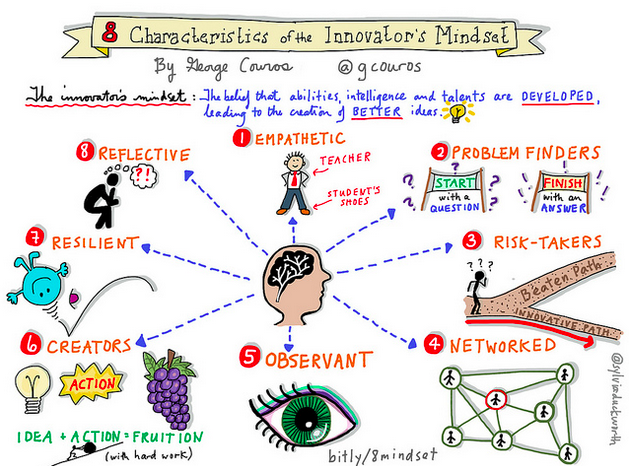
The Innovator’s Mindset: Empower Learning, Unleash Talent, and Lead a Culture of Creativity by George Couros gives great encouragement and advice to teachers seeking to improve continuously in the face of budget restrictions, policies that don’t make sense, and curricula that are way too static for a constantly changing world. This would be a great book to give to every teacher in your school.
Introduction
- George begins with praise for his father who was always learning and exposing his children to the latest technology from the VCR to Facebook. As an illiterate Greek immigrant, he started as a dish washer and ended up as a restaurant owner. While his father had to embrace countless changes, George regrets that many educators are more likely to resist change rather than embrace it. As a result, we have 21st-century schools with 20th-century learning. If teachers don’t understand that the world is changing and that they need to change with it, the world may decide that it doesn’t need them anymore. If it’s just about knowledge, students can find and digest that themselves.
- There is a need for innovation in education. Inspiration is also needed and it is one of today’s students’ chief needs. It can spark curiosity that will prompt students to learn on their own. Unfortunately, most students leave school less curious. Successful students leave school being good at school and the world isn’t school. One day they are raising their hand to go to the restroom and the next day they are on their own in a world that requires critical thinking and collaboration.
Part I: Innovation in Education – 1. What Innovation is and Isn’t
- George sites the failure of Blockbuster Video Rental as an example of how an organization can fail if they don’t change fast enough. If, according to the common saying, “We need to prepare kids for jobs that don’t exist,” innovation in education is essential. George even created a job title: Division Principal of Innovative Teaching and Learning. No teacher has ever had a former student return to say a standardized test changed his of her life for the better.
- George defines innovation as a way of thinking that creates something new and better. It can be something totally new (invention), or a change to something that already exists (iteration). It’s important to avoid thinking that any use of technology is innovative. Student essays done on a computer are probably not innovative, while a student blog may well be. Technology is a tool, not a learning outcome or a leadership outcome. As John Maxwell once said, “Change is inevitable, growth is optional.” It’s vital that education not become the new Blockbuster.
2. The Innovator’s Mindset
- We start with an inspiring story of how a student overcame a stutter by adopting the innovator’s mindset. He goes on to discuss the highlights of Carol Dewck’s book Mindset: The New Psychology of Success. See my summary here. George points out that the world only cares about and pays for what you can do with what you know, and it doesn’t care how you learned it. Every educator, therefore, needs to have an innovator’s mindset. To promote this, George made a budget line titled ‘innovation’ and it was up to teachers to apply for the money. This is like a school setting up its own grant system. He also lets teachers know about the popular mantra that says: failure is an important part of the process.
- Letting teachers know they have the freedom to fail will also promote resiliency and grit. The only way to innovate is to try things and see if they work or not. This must be done as you adjust to each learner. In order to innovate, you need to focus on asking questions. This will drive the process. Teachers also need to ask would they want to be a learner in their own classrooms? Lessons need to connect to students’ lives and they need to learn from each other. You also need to collect feedback continuously.
3. Characteristics of the Innovator’s Mindset.
- Silvia Duckworth’s illustration at the top lays out the eight characteristics. They are: 1) Empathetic – This is all about thinking about the classroom environment and lessons from the students’ point of view. 2) Problem Finding: This is one step beyond simply giving students problems to solve. This will help students to become self-starters. 3) Risk Takers: There needs to be a balance between drawing on one’s experience and trying something new. 4) Networked: Every idea is a network of ideas. When students come to school we continually tell them to share. Educators need to take this advice. 5) Observant: Inspiration is everywhere and often in unexpected places. You just have to keep your eyes open. Educators also need to look beyond their field for ideas and inspiration. 6) Creators: Anyone can consume information. The move from teacher-centric instruction to learner-centric creation is vital. 7) Resilient: Expect pushback from students, colleagues, and supervisors as you try new things. This is a skill that all of us need to develop. 8) Reflective: What worked? What didn’t? What would I change? What do I do next? It’s important to question your efforts, progress, and processes.
Posted in Book Summaries, Education Books, Leadership Books | Comments Off on The Innovator’s Mindset: Empower Learning, Unleash Talent, and Lead a Culture of Creativity by George Couros
Tuesday, December 30th, 2014
The Innovators: How a Group of Hackers, Geniuses, and Geeks Created the Digital Revolution by Walter Isaacson tells the stories of the people most responsible for getting us to where we are in terms of technology. Each chapter focuses on a different innovation that made today’s world possible. It starts in the mid 1800’s when computers were just ideas and takes us to the present time. Click at the bottom of any page to get this very cool history book.
Walter Isaacson
- Walter is the CEO of the Aspen Institute, has been the chairman of CNN, and the managing editor of Time magazine. He is the author of Steve Jobs; Einstein: His Life and Universe; Benjamin Franklin: An American LIfe; and Kissinger: A Biography. He is also the coauthor of The Wise Men: Six Friends and the World They Made. He lives in Washington, DC.
Introduction
- The computer and the Internet are among the most important inventions of our era, but few people know who created them. These and other key inventions of the digital age were done collaboratively by many fascinating people who are featured in this book. The focus is on their characteristics and how they collaborated. When it comes to inventions, we tend to focus on individual genius rather than the teamwork that is almost always required. Walter also looks at the social and cultural forces that provided the atmosphere for key innovations. He notes happily that much creativity that gave us the digital age came from those who were able to connect the arts and sciences. It seems that the human-machine symbiosis that grew out of the connection between the personal computer and the Internet was largely given to us by people who stood at the intersection of the humanities and technology.
Posted in Book Summaries, Education Books | Comments Off on The Innovators: How a Group of Hackers, Geniuses, and Geeks Created the Digital Revolution by Walter Isaacson
